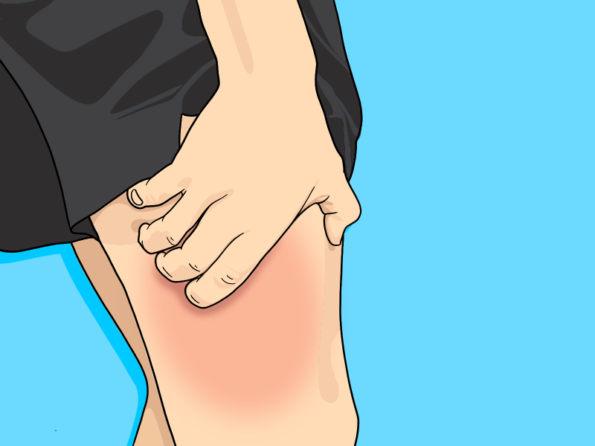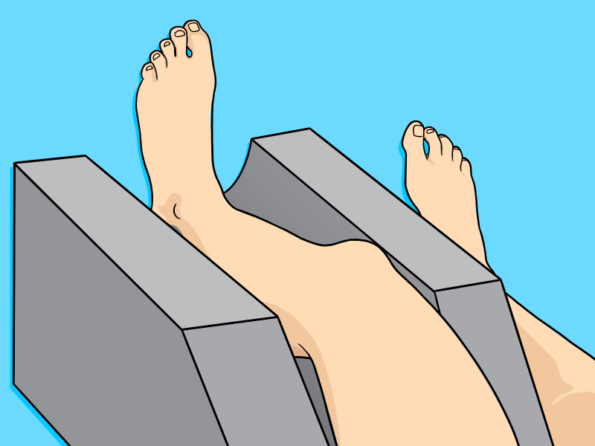How to Recover from a Pulled Hamstring
Pulling a hamstring is quite painful, but the good news is that most hamstring injuries are easily treatable. Often times they are treated with rest, ice, and over-the-counter pain medications. Rarely surgery will be needed to repair a hamstring muscle or tendon.


A hamstring injury occurs when you strain or pull one or more of your hamstring muscles, which is a group of three muscles that run along the back of your thigh. These three muscles are responsible for bending or flexing the knee. A small portion of the hamstring muscle also spans across the hip joint and is involved in hip extension. The hamstring muscle is balanced by the quadriceps on the front of the thigh that causes the knee to extend. Together, the hamstring and the quadriceps help control the power and stability of the knee joint, which enables people to walk, run, jump, and squat.
Muscle fibers can become strained during running, kicking, or even walking down the steps. Depending on the severity of the injury, the muscle will tear, and many people can feel and hear a “pop” when the muscle is damaged.
However, you don’t have to be an “active” person to experience this injury. There are other higher risk factors associated with pulling a hamstring.
Risk Factors
- Muscle imbalance: A muscle imbalance can lead to a hamstring injury. When the quadriceps become stronger than the hamstrings, you are more like to suffer an injury.
- Prior hamstring injury: If you’ve had one before, you are more likely to have another one. This especially happens when you resume normal activities before you fully recover.
- Poor flexibility: If you have poor flexibility, your muscles may not be able to withstand certain actions during activities.
- Sport participation: As previously mentioned, playing sports increases the chance of suffering a hamstring injury. Sports that require sprinting or running make a hamstring injury more likely.
- Poor preparation: Failing to warm-up or stretch before a strenuous activity increases the chance of pulling a hamstring.
Now that we’ve outlined what a pulled hamstring injury is and the risk factors associated with it, it’s time to assess the symptoms. How do you know if you have a pulled hamstring? Some symptoms may seem obvious, but other symptoms can be associated with other injuries. A huge part of properly healing is knowing exactly what type of injury you have, and also knowing its severity. Not all strain
Strain Level
Grade 1: This strain may feel like a slight pull in the back of the thigh. The exact injury may not be remembered or recognized, and the onset of pain is gradual. There may be gradual swelling and pain when the knee is extended. The pain usually worsens with aggressive activities such as running or walking up the stairs. It takes between a few days and three weeks to heal.
Grade 2: This is considered a tear, not a strain, and it’s usually connected to an acute event. You will feel an immediate sharp pain in the back of the thigh or higher up towards the buttock. Walking may be difficult because extending the knee stretches the injured muscle. Limping is often present with a grade two strain. Swelling and tenderness are also present in the injured area. This strain takes weeks or months to heal.
Grade 3: This is the progression of a grade two tear with stronger symptoms of pain and swelling. This grade is often associated with athletic injuries because the muscle is aggressively stretched that it tears with a pop so loud that it can be heard by others. This strain also takes weeks or months to heal.
While you may be able to decipher which grade strain you have, it is always safest to seek a proper diagnosis from a medical professional. A physical examination can determine the amount of damage caused to a muscle or tendon. Doctors will usually ask you questions surrounding the circumstances of the injury, and test the range of motion in the knee. In some cases, further testing is required if the injury is more severe. In this case, doctors will use an MRI or x-ray, to asses the amount of damage in the muscle or tendon, and to help plan rehabilitation.
Recovery (RICE Method)
When on the road to recovery, it’s important to closely follow a regimen and your medical provider’s advice. Minor and moderate hamstring strains usually heal on their own, however, there are a few things you can do to speed up the healing time and get back to your daily activities pain-free.


Rest your leg: Avoid putting pressure on your leg, and if the pain is severe, you may need crutches until it goes away.
Ice your leg: This reduces pain and swelling. Do this for 20-30 minutes every three to four hours, for two to three days, or until the pain is gone.
Compress your leg: Use an elastic bandage around the leg to keep down swelling.
Elevate your leg: Prop your leg on a pillow, folded blanket, or cushion when you are lying or sitting down and raise it higher than your heart. This method reduces swelling.
Also, if recommended by your doctor or physical therapist, you can practice stretching or strengthening exercises at home to help prevent and rebuild pulled hamstring injuries. Exercises are a great way to gently recondition and strengthen the muscle, and help with the recovery process. However, you should always check with your doctor before starting any exercise.
Recovery takes at least 4 to 8 weeks if you have a partial tear. During this time, you’ll need regular physical therapy and lots of rest.
If the above methods do not heal a partial tear, or if you have a complete tear, hamstring surgery may be needed to correct the injury.
